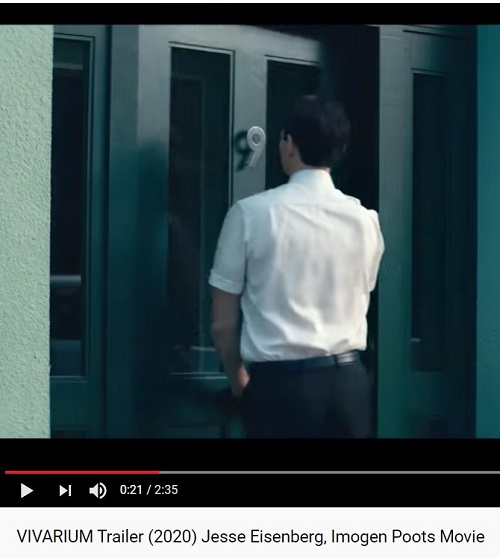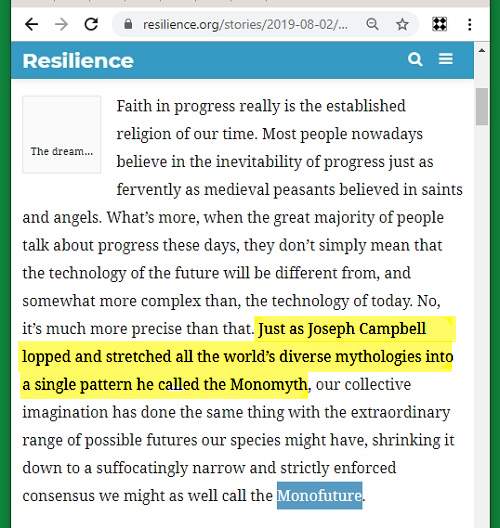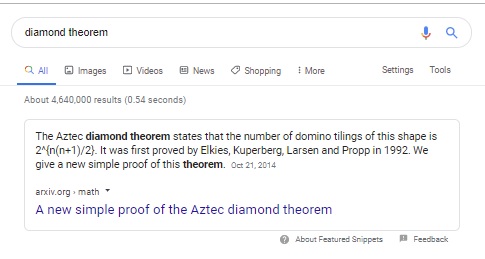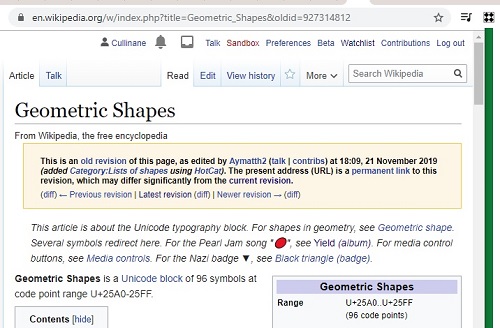Saturday, May 9, 2020
|
“Much of ‘Laurel Canyon’ proves tedious and rigged as it moves from Cambridge, where both Sam and Alex have graduated from Harvard Medical School, to California, where Sam will intern as Alex completes her doctoral thesis on the sex lives of fruit flies.
— Malcolm Johnson in The Hartford Courant
on March 28, 2003 |
See as well this journal on the above Courant date — March 28, 2003 —

“Time flies like an arrow; fruit flies like bananas.”
— Saying attributed to Harvard linguist Anthony Oettinger
Comments Off on Comedy Team: Tedious and Rigged

See also earlier posts mentioning Shrikhande in this journal.
He reportedly died on April 21, 2020.
Synchronologists may consult posts now tagged with that date.
Comments Off on Shrikhande Continues.
Friday, May 8, 2020
In memory of a performer and historian of popular music
who reportedly died on April 19, 2020 —

Related material with an Easter theme —

See also posts in this journal related to March 11.
Comments Off on Orthodox
From Log24 on August 30, 2013 —
From a 2015 film viewed last night —

Comments Off on Production Values
"Even when some parts of the show don’t feel like they’re working,
the production is always top notch and eye-popping. The score, too,
is top notch here, but it’s the use of Pink Floyd’s 'The Dark Side of
the Moon' that resonates most."
— Kevin Lever on the Westworld May 3 Season 3 finale
Image from Log24 posts tagged Spectral Valhalla —

Comments Off on Moon Song
"E " is for "Einheit."

See also "The Unity."
Comments Off on Die Einheit
Thursday, May 7, 2020
“The holiday goes by dozens of names — but many countries unofficially
refer to it as Buddha’s Birthday or Buddha Day. It celebrates three
important events of Buddha’s life: birth, enlightenment, and death —
said to have occurred on the same calendar day, albeit many years apart.”
— CNN
Comments Off on Happy Vesak
“Mathematics may be art, but to the general public it is
a black art, more akin to magic and mystery. This presents
a constant challenge to the mathematical community: to explain
how art fits into our subject and what we mean by beauty.”
— Sir Michael Atiyah, quoted here on April 4, 2016


Illustrations, from the American Mathematical Society Spring
2020 book sale, of a book scheduled to be published May 28.
Comments Off on Now You See It, Now You Don’t
Comments Off on Notes on MSRI (Pronounced “Misery”)
Comments Off on Gimme the beat, boys, and free my soul.
"He wished Kant were alive. Kant would have appreciated it.
That master diamond cutter."
— Robert M. Pirsig, Zen and the Art of Motorcycle Maintenance , Part III.
Kant's "category theory" —
|
"In the Transcendental Analytic, Kant deduces the table of twelve categories, or pure concepts of the understanding….
The categories must be 'schematized' because their non-empirical origin in pure understanding prevents their having the sort of sensible content that would connect them immediately to the objects of experience; transcendental schemata are mediating representations that are meant to establish the connection between pure concepts and appearances in a rule-governed way. Mathematical concepts are discussed in this context since they are unique in being pure but also sensible concepts: they are pure because they are strictly a priori in origin, and yet they are sensible since they are constructed in concreto . "
— Shabel, Lisa, "Kant's Philosophy of Mathematics", The Stanford Encyclopedia of Philosophy (Spring 2016 Edition), Edward N. Zalta (ed.), URL = <https://plato.stanford.edu/archives/spr2016/entries/kant-mathematics/>.
|
See also The Diamond Theorem and Octad.us.
Comments Off on Kant as Diamond Cutter
Wednesday, May 6, 2020
The phrase “problem of identity” in the previous post suggests a search
for other instances of the phrase. That search yields a talk by Andrei Rodin:


A later book by Rodin echoes Vladimir Arnold‘s remark
that “mathematics is a part of physics.” (Rodin is a Russian
who apparently worships at the Church of Scientism.)

The Rodin talk is dated 19 November 2012.
For some very different philosophical remarks, by poet
Wallace Stevens, see the Log24 posts of 19 November 2012.
Comments Off on Identity Problem
is a philosophical conundrum discussed this morning in the weblog of
David Justice.

A related statement of this “problem of identity,” from posts
in this weblog tagged “For Banff 2009” yesterday afternoon—

Remarks related to the ship of Theseus —


Comments Off on “The Ship of Theseus”…
Comments Off on Oprah, Uma
Tuesday, May 5, 2020
Comments Off on Raiders of the Lost Horizon
Comments Off on In Memoriam: Jan Saxl, Mathematician
Comments Off on Notes for a Wake

This is perhaps the same Robert Mezey, poet at Pomona College,
who reportedly died on April 25.
See a Pomona link, the Fano Hallows, from this journal on that date.
Comments Off on If Not Sublime
Monday, May 4, 2020
Comments Off on Raiders of the Lost Sublime
The title is a phrase from the Suzanne Vega song in the previous post.
“Always busy counting . . . .” — Tagline at Peter J. Cameron’s weblog.
“This morning brought the news that Jan Saxl died on Saturday.”
— Peter J. Cameron today
A search for Saxl in this weblog yields a post related to a topic in
Wolfram Neutsch’s book Coordinates. See Saturday’s post
“Turyn’s Octad Theorem: The Next Level.”
Related narrative from the Saturday post —

Related narrative from Sunday’s Westworld finale —

Comments Off on The Man Behind the Counter
Continues.

Update at 4 PM —

“It is always
Nice to see you”
Says the man
Behind the counter
— Suzanne Vega. “Tom’s Diner”

Tom Stall’s diner in “A History of Violence” (30 September 2005).
This journal on 30 September 2005 —
“This place ain’t doing me any good.
I’m in the wrong town,
I should be in Hollywood.”
— Dylan, “Things Have Changed“
Comments Off on The Thing and I …

“This is not the Hartshorne you’re looking for.”

“Reality as a Social Process (1953) developed the ideas
that becoming, or process, is fundamental throughout
reality, and that all the things that become are interrelated.”
— From American National Biography
Related material —
The New York Times obituary of Madeline Faith Kripke
and Nietzsche on “becoming, or process.”
Comments Off on May the Fourth
Sunday, May 3, 2020
Comments Off on Crichton Time

He beomes aware of something else… some other presence.
“Anybody here?” he says.
I am here.
He almost jumps, it is so loud. Or it seems loud. Then he wonders if
he has heard anything at all.
“Did you speak?”
No.
How are we communicating? he wonders.
The way everything communicates with everything else.
Which way is that?
Why do you ask if you already know the answer?
— Sphere by Michael Crichton, Harvard ’64
Comments Off on Into the Westworld
Saturday, May 2, 2020
Comments Off on Beat the Clock
From the obituary of a game inventor who reportedly died
on Monday, February 25, 2013 —
” ‘He was hired because of the game,’ Richard Turyn,
a mathematician who worked at Sylvania, told
the Washington Post in a 2004 feature on Diplomacy.”

* For the theorem, see Wolfram Neutsch, Coordinates .
(Published by de Gruyter, 1996. See pp. 761-766.)
Having defined (pp. 751-752) the Miracle Octad Generator (MOG)
as a 4×6 array to be used with Conway’s “hexacode,” Neutsch says . . .
“Apart from the three constructions of the Golay codes
discussed at length in this book (lexicographic and via
the MOG or the projective line), there are literally
dozens of alternatives. For lack of space, we have to
restrict our attention to a single example. It has been
discovered by Turyn and can be connected in a very
beautiful way with the Miracle Octad Generator….
To this end, we consider the natural splitting of the MOG into
three disjoint octads L, M, R (‘left’, ‘middle’, and ‘right’ octad)….”
— From page 761
“The theorem of Turyn” is on page 764 —

Comments Off on Turyn’s Octad Theorem: The Next Level*
Friday, May 1, 2020

Related pure mathematics —
The Escape from Plato’s Cave to . . .

See also Numberland and Walpurgisnacht Geometry.
Comments Off on The H-State
The following passage is from Amanda Gefter’s Trespassing
on Einstein’s Lawn (Bantam Books, 2014).
| “You know the story of Plato’s cave?” my father asked. “All the prisoners are chained up in the cave and they can’t see the real world outside, only the shadows on the wall? That’s supposed to be a negative thing, like they’ll never know reality. But the truth is, you have to be stuck inside a limited reference frame for there to be any reality at all! If you weren’t chained to your light cone, you’d see nothing. The H-state.”
I nodded. “You’d have no information. You need the broken symmetry, the shadow, to have information and information gives rise to the world. It from bit.”
I couldn’t help but grin with excitement. The message was clear: having a finite frame of reference creates the illusion of a world, but even the reference frame itself is an illusion. Observers create reality, but observers aren’t real. There is nothing ontologically distinct about an observer, because you can always find a frame in which that observer disappears: the frame of the frame itself, the boundary of the boundary.
“If physicists discover an invariant someday, the game will be up,” my father mused. “That would rule out the hypothesis that the universe is really nothing.”
That was true. But so far, at least, every last invariant had gone the way of space and time, rendered relative and observer-dependent. Spacetime, gravity, electromagnetism, the nuclear forces, mass, energy, momentum, angular momentum, charge, dimensions, particles, fields, the vacuum, strings, the universe, the multiverse, the speed of light— one by one they had been downgraded to illusion. As the surface appearance of reality fell away, only one thing remained. Nothing. |
My path to Gefter’s father’s musing led from a quotation attributed,
probably falsely, to John Archibald Wheeler on page 52 of Octavio
Paz’s Claude Lévi-Strauss: An Introduction (Cornell, 1970) —
“There is a point at which
‘something is nothing and nothing is something.’ “
The quote may actually be by AP writer John Barbour reporting
on a 1967 American Physical Society talk by Wheeler, “The End
of Time.”
Gefter mentions Wheeler 369 times:

See as well Introduction to Quantum Woo.
Comments Off on Bullshit Studies
Thursday, April 30, 2020



A version more explicitly connected to finite geometry —

For the six synthematic totals , see The Joy of Six.
Comments Off on Walpurgisnacht Geometry
Wednesday, April 29, 2020
For an account by R. T. Curtis of how he discovered the Miracle Octad Generator,
see slides by Curtis, “Graphs and Groups,” from his talk on July 5, 2018, at the
Pilsen conference on algebraic graph theory, “Symmetry vs. Regularity: The first
50 years since Weisfeiler-Leman stabilization” (WL2018).
See also “Notes to Robert Curtis’s presentation at WL2018,” by R. T. Curtis.
Meanwhile, here on July 5, 2018 —
| Simultaneous perspective does not look upon language as a path because it is not the search for meaning that orients it. Poetry does not attempt to discover what there is at the end of the road; it conceives of the text as a series of transparent strata within which the various parts—the different verbal and semantic currents—produce momentary configurations as they intertwine or break apart, as they reflect each other or efface each other. Poetry contemplates itself, fuses with itself, and obliterates itself in the crystallizations of language. Apparitions, metamorphoses, volatilizations, precipitations of presences. These configurations are crystallized time: although they are perpetually in motion, they always point to the same hour—the hour of change. Each one of them contains all the others, each one is inside the others: change is only the oft-repeated and ever-different metaphor of identity.
— Paz, Octavio. The Monkey Grammarian
(Kindle Locations 1185-1191).
Arcade Publishing. Kindle Edition. |
The 2018 Log24 post containing the above Paz quote goes on to quote
remarks by Lévi-Strauss. Paz’s phrase “series of transparent strata”
suggests a review of other remarks by Lévi-Strauss in the 2016 post
“Key to All Mythologies.“

Comments Off on Curtis at Pilsen, Thursday, July 5, 2018
Tuesday, April 28, 2020
Comments Off on Mathgate*
Comments Off on The Oberwolfach Zoom

“A sort of pointillist mosaic”
— Author David Mitchell on the film adaptation of
his novel Cloud Atlas .
See also the previous post, Cloud Atlas of Unknowing.
“Art isn’t easy.” — Sondheim.
Comments Off on The Art Issue
Comments Off on Cloud Atlas of Unknowing
Comments Off on Darkness from the British Film Institute
Monday, April 27, 2020
Comments Off on Darkness Visible
“At that instant he saw, in one blaze of light, an image of unutterable
conviction, the reason why the artist works and lives and has his being –
the reward he seeks –the only reward he really cares about, without which
there is nothing. It is to snare the spirits of mankind in nets of magic,
to make his life prevail through his creation, to wreak the vision of his life,
the rude and painful substance of his own experience, into the congruence
of blazing and enchanted images that are themselves the core of life, the
essential pattern whence all other things proceed, the kernel of eternity.”
— Thomas Wolfe, Of Time and the River
“… the stabiliser of an octad preserves the affine space structure on its
complement, and (from the construction) induces AGL(4,2) on it.
(It induces A8 on the octad, the kernel of this action being the translation
group of the affine space.)”
— Peter J. Cameron,
The Geometry of the Mathieu Groups (pdf)
“The yarns of seamen have a direct simplicity, the whole meaning
of which lies within the shell of a cracked nut. But Marlow was not
typical (if his propensity to spin yarns be excepted), and to him the
meaning of an episode was not inside like a kernel but outside…."
— Joseph Conrad in Heart of Darkness

Comments Off on The Cracked Nut
Sunday, April 26, 2020
This post was suggested by a David Justice weblog post yesterday,
Coincidence and Cosmos. Some related remarks —
“The yarns of seamen have a direct simplicity, the whole meaning
of which lies within the shell of a cracked nut. But Marlow was not
typical (if his propensity to spin yarns be excepted), and to him the
meaning of an episode was not inside like a kernel but outside,
enveloping the tale which brought it out only as a glow brings out a
haze, in the likeness of one of these misty halos that sometimes
are made visible by the spectral illumination of moonshine.”
— Joseph Conrad in Heart of Darkness
“By groping toward the light we are made to realize
how deep the darkness is around us.”
— Arthur Koestler, The Call Girls: A Tragi-Comedy,
Random House, 1973, page 118
See as well posts now tagged Crux.
Comments Off on Crux
This post was suggested by yesterday morning's link to The Fano Hallows.
"Mathematics may be art, but to the general public it is
a black art, more akin to magic and mystery. This presents
a constant challenge to the mathematical community: to explain
how art fits into our subject and what we mean by beauty."
— Sir Michael Atiyah, quoted here on April 4, 2016
A symbol related to The Fano Hallows —

Comments Off on The Triangle of Art
Saturday, April 25, 2020
“Well, I’ve helped to wind up the clock —
I might as well hear it strike!”
— Said to be a quotation from the grandfather
of a “pirate radio” founder who reportedly died
at 79 on April 20.
See as well this journal on the night of April 20 —
and a search for “Wheel of Time.”
Comments Off on The Grandfather Clock
“Brahms maintained a classical sense of
form and order in his works….” — Wikipedia
For example —

The above Cologne sextet upload date suggests a review.
See posts now tagged The Fano Hallows.
Comments Off on Form and Order
Friday, April 24, 2020

This post was suggested by a New York Review of Books article
on Cologne artist Gerhard Richter in the May 14, 2020, issue —
“The Master of Unknowing,” by Susan Tallman.

Some less random art —

Comments Off on Art at Cologne
Thursday, April 23, 2020
See the web pages octad.group and octad.us.
Related geometry (not the 759 octads, but closely related to them) —

The 4×6 rectangle of R. T. Curtis
illustrates the geometry of octads —

Curtis splits the 4×6 rectangle into three 4×2 "bricks" —
 .
.
"In fact the construction enables us to describe the octads
in a very revealing manner. It shows that each octad,
other than Λ1, Λ2, Λ3, intersects at least one of these ' bricks' —
the 'heavy brick' – in just four points." . . . .
— R. T. Curtis (1976). "A new combinatorial approach to M24,"
Mathematical Proceedings of the Cambridge Philosophical Society ,
79, pp 25-42.
Comments Off on Octads and Geometry
From the subtitles of the recent Kristen Stewart film “Underwater” —
427
00:30:26,144 –> 00:30:27,476
He’d always say
he had a new joke,
428
00:30:27,478 –> 00:30:29,445
and then he’d tell
the same stupid joke.
429
00:30:29,447 –> 00:30:32,785
I was… laughing at that joke.
430
00:30:34,053 –> 00:30:35,685
Yeah, what was it?
431
00:30:35,687 –> 00:30:38,654
What did the fish say when
it bumped into the brick wall?

April 11 was the dies natalis , in the Catholic sense, of John Horton Conway.
Related material: Other posts containing the phrase “brick wall.”
Comments Off on Dead Poet Joke
Wednesday, April 22, 2020
The title is of course from an old joke about mystic philosophies.
Related remarks by John Archibald Wheeler —
“Remarkable issues connected with the puzzle of existence
confront us today in Hermann Weyl’s domain of thought.
Four among them I bring before you here as especially interesting:
(1) What is the machinery of existence?
(2) What is deeper foundation of the quantum principle?
(3) What is the proper position to take about the existence of
the “continuum” of the natural numbers? And
(4) What can we do to understand time as an entity, not precise and
supplied free of charge from outside physics, but approximate and
yet to be derived from within a new and deeper time-free physics?
In brief, how come time?
What about the continuum?
How come the quantum?
What is existence?”
— John A. Wheeler, “Hermann Weyl and the Unity of Knowledge,”
American Scientist 74, no. 4 (1986): 366–75. Reprinted in
John A. Wheeler, At Home in the Universe
(American Institute of Physics, December 1, 1995).
The above bibliographic data is from . . .
Schrank, Jeffrey. Inventing Reality: Stories We Create To Explain Everything .
Gatekeeper Press. Kindle Edition, March 14, 2020.
For further scholarly details, see a version at JSTOR:
“…the article is adapted from the concluding address given at
the Hermann Weyl Centenary Congress, University of Kiel, 3 July 1985.”
— https://www.jstor.org/stable/27854250.
I prefer Charles Williams on “the Unity of Knowledge.”
See the 15 instances of the phrase “the Unity” in his 1931 novel Many Dimensions .
Comments Off on One with Everything
Comments Off on Puzzle Pictures
Comments Off on Arts at Cambridge
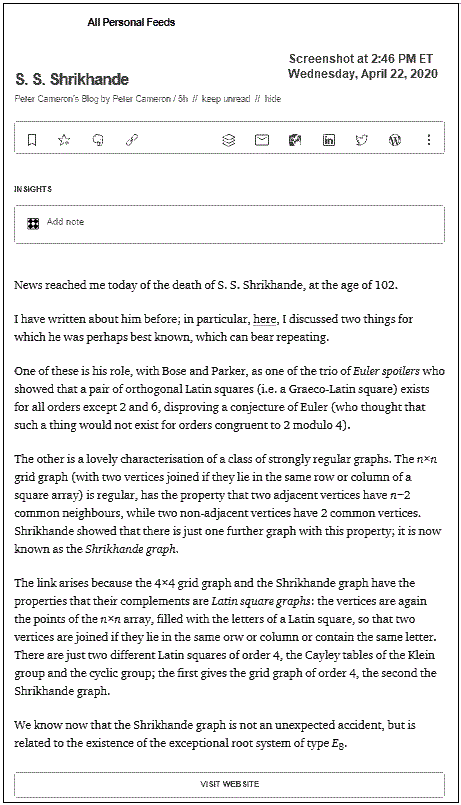
See as well Shrikhande in this journal.
Comments Off on Shrikhande Death
For some mathematical background, see Deep + Hardy.
Related entertainment —

Related non-entertainment —

Comments Off on Deep Horizon
Tuesday, April 21, 2020
The Tesseract Timeline:
Where The Cube Has Been In The …
www.cinemablend.com › news › the-tesseract-timeline-…
Mar 13, 2019 – With HYDRA. In 1942, Johann Schmidt, a.k.a.
the Red Skull, arrived in Tønsberg to procure the Tesseract
from an ancient church. While he …
Related material from posts tagged Aqua
(suggested by a name in the previous post) —
Lene from Tønsberg —


Comments Off on Living Water
Comments Off on Stellar Drama
Comments Off on Cold Comfort Continues
Monday, April 20, 2020
Comments Off on Wheel Turnin’ ’Round and ’Round
From Atomicity and Quanta by James Jeans,
Cambridge University Press, 1926, pp. 55-56 —
| “So far as we can at present conjecture, the investigation of the structure which produces this atomicity appears to be the big problem in the path of the quantum-theory. To conform to the principle of relativity, the new atomicity must admit of expression in terms of the space-time continuum, although we have seen that it cannot be an atomicity of the continuum itself. It may conceivably be an atomicity of its metric properties, such as determine its curvatures. We may perhaps form a very rude picture of it by imagining the curvature of the continuum in the neighbourhood of an atom not to be of the continuous nature imagined by Weyl, but to occur in finite chunks—a straight piece, then a sudden bend, then another straight bit, and so on. A small bit of the continuum viewed through a five-dimensional microscope might look rather like a cubist picture; and, conversely, perhaps a cubist picture looks rather more like a little fragment of the continuum than like anything else.” |
This is, of course, not the “atomicity” of the previous post.
For examples of that atomicity, a concept of pure geometry
rather than of physics, see …
Faure, C. A., and Frölicher, A., “Fundamental Notions of
Lattice Theory,” in Modern Projective Geometry (2000).
(Mathematics and Its Applications, vol 521. Springer, Dordrecht.)
Related art (a “cubist picture”) —

Juan Gris, Fruit Dish and Carafe , 1914
Comments Off on Geometry for Poets
Sunday, April 19, 2020
A language game on Orthodox Easter —
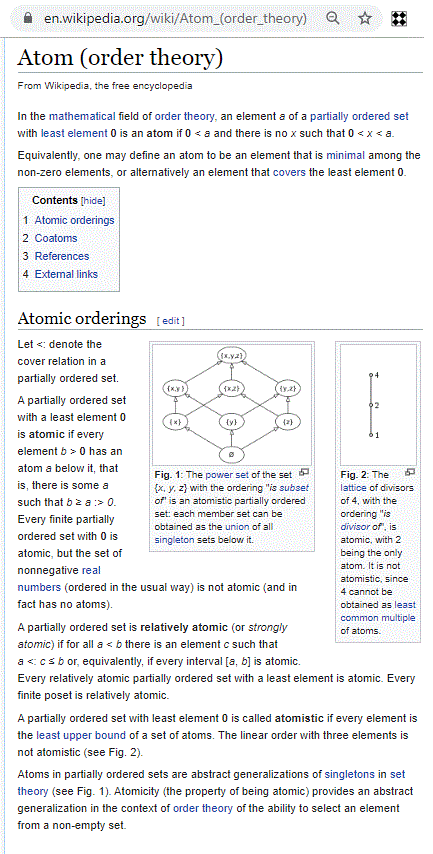
See also Geometric Theology and Trinity Staircase.
Comments Off on Easter Egg for Wittgenstein
Saturday, April 18, 2020
Comments Off on Meanwhile…
Comments Off on Dark Passage
“Where there is meat, there are flies.”
— John Archibald Wheeler
|
“ Simon’s head was tilted slightly up.
His eyes could not break away
and the Lord of the Flies hung in space
before him.
‘What are you doing out here all alone?
Aren’t you afraid of me?’
Simon shook.
‘There isn’t anyone to help you.
Only me. And I’m the Beast.’ ”
— William Golding |


Comments Off on Cold Comfort
Friday, April 17, 2020
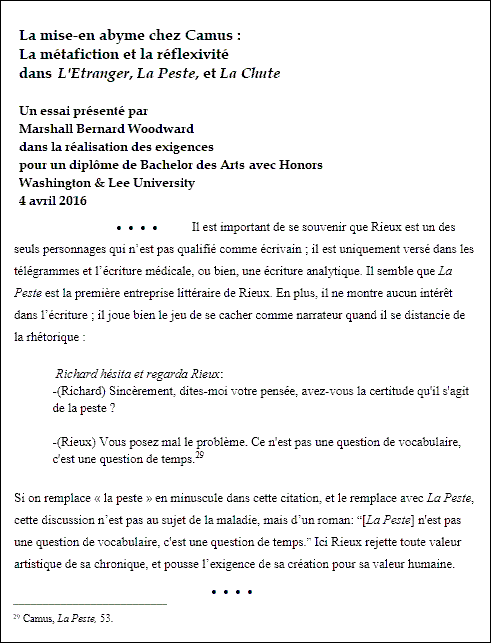
See also the previous post.
The above date “4 avril 2016”
suggests a review of that date
in this journal: “Cube for Berlin.”
Comments Off on Academic Games and the Plague
“But while Camus was writing for the moment,
he was also writing for the future. He was making art
out of what happens between antibodies and germs,
expanding metaphors from the molecular level.”
— Laura Marris on translating The Plague

Another remark on dramatic irony —
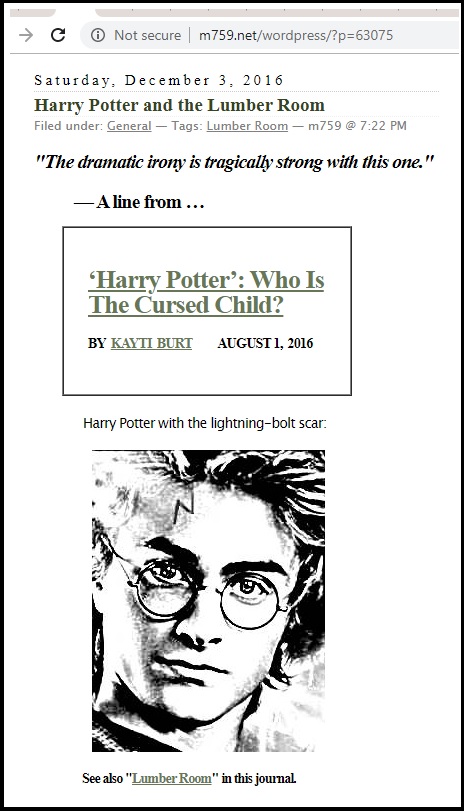
See as well “two-way mirror” in this journal.
Comments Off on Expanding (and Mixing) Metaphors
Comments Off on Under the April Snow…
The above title was suggested by the previous post, Explosive Remarks.

Comments Off on A Mechanism of Fission

“Here is the background to Wheeler’s explosive remarks.
John Archibald Wheeler, director of the Center
for Theoretical Physics at the University of Texas,
is one of the world’s top theoretical physicists.
In 1939 he and Niels Bohr published a paper on
‘The Mechanism of Nuclear Fission”
that laid the groundwork for atomic and hydrogen bombs.
Wheeler later played major roles in their development.”
For a rather different explosion of Wheeler’s views, see the previous post.
Comments Off on Explosive Remarks
“In his big book, Gravity [sic ], Wheeler puts our space
into what he calls superspace, and speculates on the
most basic physical laws which operate on superspace.
He comes to the (to me) surprising conclusion that the
rock-bottom laws are the laws of the propositional calculus!”
— Martin Gardner, letter to Donald E. Knuth, 8 January 1976,
on cover of Notices of the American Mathematical Society ,
March 2011 issue.
Fact check —

Related reading —

Comments Off on Introduction to Quantum Woo
Thursday, April 16, 2020

“A love story of epic, epic, epic proportion” — Kristen Stewart
See also the following letter to Knuth on four-color enthusiast
Spencer-Brown, as well as Tim Robinson on the same subject
in his book My Time in Space .

Comments Off on A Four-Color Epic

See as well Pi Day 2020.
Comments Off on Snow White’s Time in Space
Comments Off on The Dreaming
Wednesday, April 15, 2020
Comments Off on Found Art
In memory of the author of My Time in Space * —
Tim Robinson, who reportedly died on April 3 —

See also an image from a Log24 post, Gray Space —

Related material from Robinson’s reported date of death —

* First edition, hardcover, Lilliput Press, Ireland, April 1, 2001.
Comments Off on Death Warmed Over
A post by David Justice today suggests a review —

A more literary approach to refutation —
|
“He is real,” said the boy, passionately. “He’s not a fool. He’s real.”
“Listen,” said his father. “When you go down the garden there’s nobody there. Is there?”
“No,” said the boy.
“Then you think of him, inside your head, and he comes.”
“No,” said Small Simon. “I have to make marks. On the ground. With my stick.”
“That doesn’t matter.”
“Yes, it does.”
— John Collier, “Thus I Refute Beelzy.” |
Comments Off on Refutation

See also Invariance, a Log24 post from yesterday morning —

Note the resemblance to Plato’s Diamond.
Comments Off on Oslo Prophet (after Varignon)
Stephen Wolfram yesterday —
“Causal invariance may at first seem like a rather obscure property.
But in the context of our models, we will see in what follows that
it may in fact be the key to a remarkable range of fundamental features
of physics, including relativistic invariance, general covariance, and
local gauge invariance, as well as the possibility of objective reality in
quantum mechanics.”
From . . .

Comments Off on “Causal Invariance” According to Wolfram
Tuesday, April 14, 2020
Church Diamond Continued

The above article leads to remarks by Stephen Wolfram published today :


See also “Invariance” as the title of the previous post here.
Comments Off on Confluence, or:

Note the resemblance to Plato’s Diamond.

Click the Pritchard passage above for an interactive version.
Comments Off on Invariance
Monday, April 13, 2020
Comments Off on Cover Art
The May 2020 Notices of the American Mathematical Society has a
memorial tribute article on Goro Shimura, who died on May 3, 2019.
See also this journal on May 3, 2019 in posts now tagged Wondertale.
Related ethnic remark: “As a Chinese jar…” — T. S. Eliot
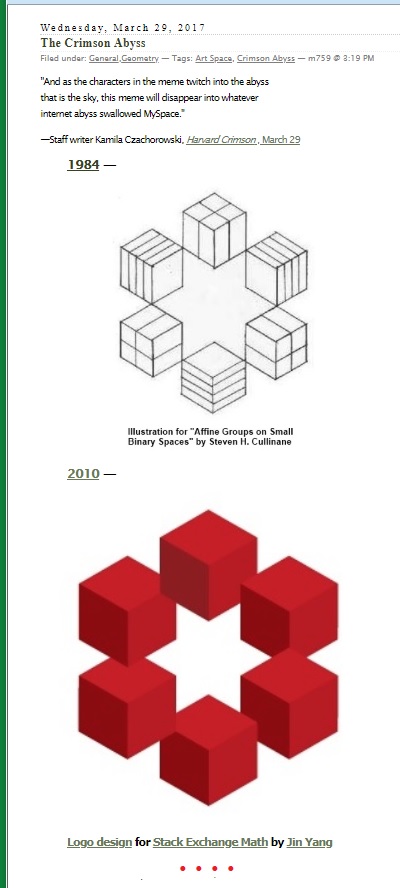
“Things can get muddled further….”
— Webpage on the Japanese word
manji.
Indeed they can :

Comments Off on Tribute


See also this journal on November 29, 2011 —The Flight from Ennui.
Related illustration from earlier in 2011 —

See also this journal on 20 Sept. 2011 — Relativity Problem Revisited —
as well as other posts tagged Congregated Light.
Comments Off on Cubes and Axes
Sunday, April 12, 2020
From a post this morning by Peter J. Cameron
in memory of John Horton Conway —
| ” This happened at a conference somewhere in North America. I was chairing the session at which he was to speak. When I got up to introduce him, his title had not yet been announced, and the stage had a blackboard on an easel. I said something like ‘The next speaker is John Conway, and no doubt he is going to tell us what he will talk about.’ John came onto the stage, went over to the easel, picked up the blackboard, and turned it over. On the other side were revealed five titles of talks. He said, ‘I am going to give one of these talks. I will count down to zero; you are to shout as loudly as you can the number of the talk you want to hear, and the chairman will judge which number is most popular.’ “ |
| Thursday, August 21, 2014
Filed under: Uncategorized — m759 @ 1:00 AM
( A sequel to Lux )
“By groping toward the light we are made to realize
how deep the darkness is around us.”
— Arthur Koestler, The Call Girls: A Tragi-Comedy ,
Random House, 1973, page 118

Robin Williams and the Stages of Math
i) shock & denial
ii) anger
iii) bargaining
iv) depression
v) acceptance
A related description of the process —
“You know how sometimes someone tells you a theorem,
and it’s obviously false, and you reach for one of the many
easy counterexamples only to realize that it’s not a
counterexample after all, then you reach for another one
and another one and find that they fail too, and you begin
to concede the possibility that the theorem might not
actually be false after all, and you feel your world start to
shift on its axis, and you think to yourself: ‘Why did no one
tell me this before?’ “
— Tom Leinster yesterday at The n-Category Café |
Comments Off on Blackboard Jungle Continues.
Saturday, April 11, 2020
“… the Jesuit religious order, whose intensive, extensive ordination process
typically takes about 10 years”
— The above link in The New York Times today leads to . . .

For the Church of Synchronology —
A post in this journal on the above Jesuit date — Aug. 11, 2013 —
leads to a John Hurley at Wolfram Demonstrations . . .

This may or may not be the John Hurley described in the
LinkedIn page below (click for further details):

Comments Off on Process
“All the schools of philosophy, from ancient Greece to the Enlightenment
encyclopedists, have dreamt of one day arriving at total and definitive
knowledge, a knowledge that encompasses the world. Indeed, the dream
lives on in the minds of some scientists today.”
— “Does Basic Research Have Meaning?” by Laurent Lafforgue —
“La recherche fondamentale a-t-elle un sens?
Quelques remarques d’un mathématicien catholique,”
Conférence donnée à l’Université de Notre-Dame,
aux États-Unis, le 20 mai 2011. Voici la version anglaise
de cette conférence (traduite par Hélène Wilkinson)
Et voici Larkin in Devs —

See too “musical brocade” in this journal.
Comments Off on Dream
Friday, April 10, 2020
“At the spiritual level, the biggest oeuvre (in my eyes)
accomplished by a man, was the Passion
of the Christ and his death on the cross…”
— Quotation said to be by Grothendieck, replying to
a 1987 letter from Juan Antonio Navarro González .
The quotation is from . . .

Comments Off on The Extremadura Passion
See “Pleasantly Discursive” in this journal.

Comments Off on For Pleasantly Discursive Day
Thursday, April 9, 2020
Comments Off on A Mad Night’s Work, or: Passover for Figaro
For the Toro , see Pierre Cartier in 2001 on the barber of Seville and
“The evolution of concepts of space and symmetry.”
For the Torino , see . . .

“… the ultimate goal of the present essay
which is to illustrate the historic
evolution of the concepts of Space and Symmetry “
— Pp. 157-158 of the above book.
See also Fré et al. , “The role of PSL(2,7) in M-theory”
(2018-2019) at http://arxiv.org/abs/1812.11049v2 ,
esp. Section 4, “Theory of the simple group PSL(2,7)”
on pages 11-27, and remarks on PSL(2,7) in this journal.
Related material —

Comments Off on Symmetry: Toro, Torino
Wednesday, April 8, 2020
A screenshot from 10:07 PM EDT —

See also this journal on Sunset Boulevard.
Comments Off on For LA Boulevardiers

Click the ring for Pierre Cartier on the barber of Seville
and “The evolution of concepts of space and symmetry.”
Comments Off on Follow the Ring

Detail from a photo in Quanta Magazine today —
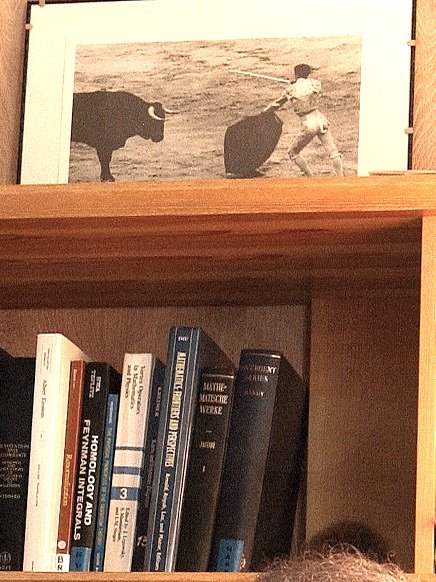
Midrash —

Comments Off on Detail
Andrew Cusack’s post today on architecture in Albany
suggests a review of the 1988 film Ironweed.
The dies natalis (in the Catholic sense) of that film’s
director was reportedly July 13, 2016.
See this journal on that date.
Comments Off on Ironweed Meditation
(The late Mark Steiner, not the late George Steiner.)
See Katherine Neville’s novel The Eight ,
Log24 posts tagged Crucible Raiders, and
St. Isidore, whose feast day is April 4 —

Mark Steiner’s book The Applicability of Mathematics
as a Philosophical Problem (Harvard University Press, 2002,
$36.50) is available for free at a website named for St. Isidore.)
Ereignis ereignet.
Comments Off on A Midrash for Steiner
Tuesday, April 7, 2020
Comments Off on Moonshine, the MOG, and the Hexacode

The following historical remarks are quoted here because
of the above Quanta Magazine article from yesterday.
From Richard Taylor, “Modular arithmetic: driven by
inherent beauty and human curiosity,” The Letter of the
Institute for Advanced Study [IAS], Summer 2012,
pp. 6– 8 (link added) :
“Stunningly, in 1954, Martin Eichler (former IAS Member)
found a totally new reciprocity law . . . .” See as well —

Comments Off on Eichler’s Amazing Bridge
Monday, April 6, 2020
Comments Off on Timequake
Sunday, April 5, 2020

From this journal on August 9, 2019 —

Block Designs?
Perhaps not.
From an Instagram account, also on August 9, 2019 — (click to enlarge) —

Comments Off on “She do the Dickens in different voices”
Comments Off on Plan 9 from The New York Times
Comments Off on The Ghost in the Shell
Saturday, April 4, 2020
Comments Off on A Schicksalstag for the Author of The Eight
Comments Off on Plan 9 From Yale…
Continues.
The previous post displayed a photo from November 2014.
Remarks quoted here in November 2014 —

“Before time began, there was the Cube.”
— Optimus Prime
Comments Off on Devising Entities…

A logo that appeared in the above 2014 photo —

Comments Off on Raumkraft
Friday, April 3, 2020
"Galois space" is now a domain name: galois.space.

Comments Off on Galois Space
A headline today —
Amazon’s ‘Tales From The Loop’ is
A Kinder, Gentler Version Of ‘Black Mirror’ —

From a search in this journal for “Loop” —

See also yesterday’s post “Mirror, Mirror.”
Comments Off on Versions
Thursday, April 2, 2020
Continued from August 2, 2019
( a date suggested by the following search ) —
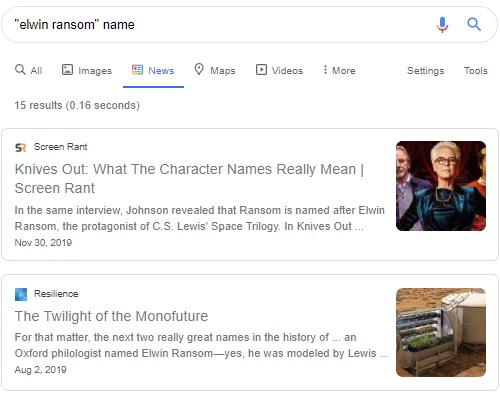
An image from “The 7/11 Meditation” ( Log24 on August 2, 2019 ) —
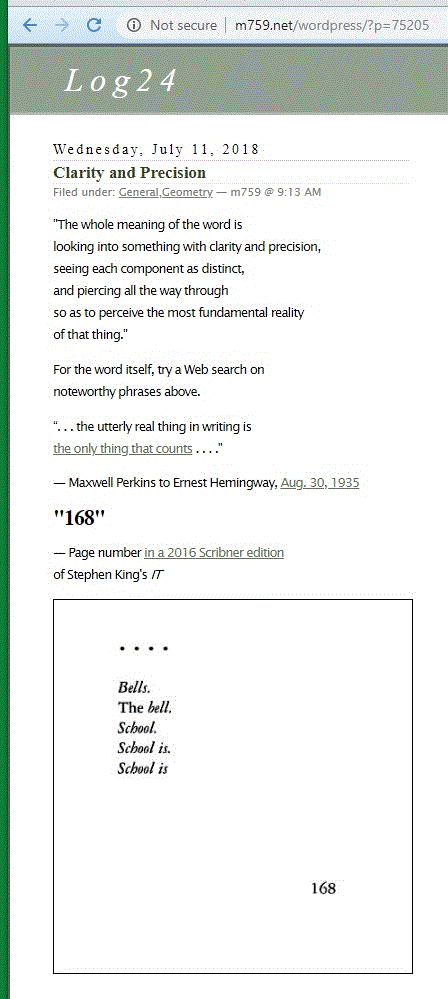
The search suggested above on 7/11, 2018, yields . . .

Comments Off on Clarity and Precision
Comments Off on Mirror, Mirror
Wednesday, April 1, 2020
Comments Off on Adventures in the Matrix
From a post of September 30, 2003 —

Comments Off on Meditation for the Cruelest Month
Comments Off on In Memoriam: Carlo Casolo

See as well Log24 on the above arXiv date — “Compare and Contrast.”
The same date two years earlier was Easter Sunday.

* An abbreviation by Paul Erdős.
Comments Off on Post for the SF*
Comments Off on The Ghost



" How small is the evil that may be safely ignored…? "
— "QBass" at Wikipedia, April 1, 2020
Good question.
Comments Off on Books at Perlego
Tuesday, March 31, 2020
Comments Off on Imperial Requiem
“Patrick Joseph McKinney is the 10th Bishop of Nottingham.
His appointment was announced on 14 May 2015 by Pope Francis.”
— Wikipedia

Related material from this journal on the date the Pope
appointed the Screwtape Bishop —

Obit et Orbit continues.
Comments Off on The Screwtape Bishop
« Newer Posts —
Older Posts »







































































 .
.




























































































